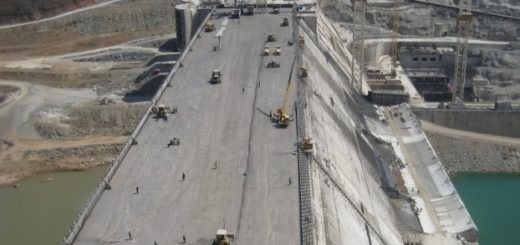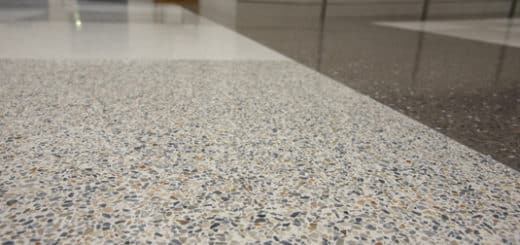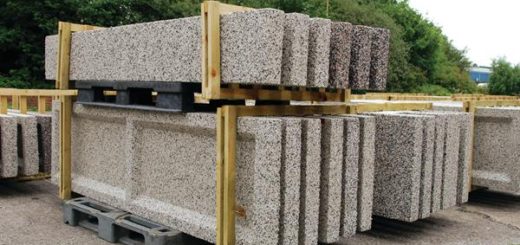High-Performance Construction Materials
In the world of construction, the term “high-performance construction materials” has become synonymous with progress and innovation. These materials have revolutionized the industry, providing numerous benefits, from enhanced structural strength to eco-friendliness. In this article, we will delve into the world of high-performance construction materials, exploring their types, properties, advantages, applications, and what the future holds for this exciting field.
Types of High-Performance Construction Materials
High-performance construction materials are a diverse group of building materials designed to offer superior strength, durability, and functionality. These materials have played a pivotal role in transforming the construction industry and have enabled the construction of remarkable structures worldwide. Here, we’ll explore various types of high-performance construction materials in more detail:
Reinforced Concrete
Reinforced concrete is the cornerstone of high-performance construction. It combines traditional concrete with steel reinforcement to create a material that excels in both compressive and tensile strength. This synergy makes it ideal for constructing skyscrapers, bridges, and large infrastructure projects.
High-Strength Steel
High-strength steel is a vital component of high-rise buildings and heavy infrastructure. This material is engineered to have exceptional load-bearing capacity, allowing for the construction of tall, robust structures. High-strength steel is known for its durability and resistance to deformation under heavy loads.
Advanced Composites
Advanced composites are materials often associated with aerospace technology, but their use has expanded to construction. Composites are created by combining two or more materials with distinct properties to create a single, superior material. They are valued for their lightweight nature, high strength, and corrosion resistance. In construction, advanced composites find applications in situations where traditional materials may not suffice, such as in the construction of lightweight, durable components like bridge decks and facades.
Engineered Wood
Engineered wood products have gained popularity as a sustainable alternative to traditional lumber. They are created by bonding layers of wood veneer or fibers to form panels, beams, and other structural elements. Engineered wood offers excellent strength and dimensional stability while being more sustainable, making it a valuable choice in construction. Laminated veneer lumber (LVL), glue-laminated timber (glulam), and oriented strand board (OSB) are a few examples of engineered wood products widely used in construction.
Fiber-Reinforced Polymers (FRP)
Fiber-reinforced polymers are a family of high-performance materials that are lightweight and corrosion-resistant. These materials consist of fibers embedded in a polymer matrix. FRPs have applications in strengthening and rehabilitating existing structures, particularly in the repair and retrofitting of concrete elements. They are increasingly being used to enhance the longevity and load-bearing capacity of various construction elements.
Ultra-High-Performance Concrete (UHPC)
Ultra-High-Performance Concrete is a special type of concrete known for its extraordinary strength and durability. It has extremely low porosity, high compressive strength, and exceptional resistance to chemical corrosion and abrasion. UHPC is used in critical infrastructure projects, including bridges, tunnel linings, and precast components. Its superior performance makes it a preferred choice for situations where traditional concrete may fail to meet the requirements.
Transparent Materials
Innovations in construction have also led to the development of high-performance transparent materials. These materials are used for glazing and facades in buildings, offering high optical clarity, impact resistance, and energy efficiency. They enhance natural lighting, aesthetic appeal, and energy savings in modern architecture.
The high-performance construction materials is diverse and continuously evolving. These materials offer superior properties and have expanded the possibilities in architecture and construction. From reinforced concrete to advanced composites and innovative transparent materials, high-performance construction materials have revolutionized the industry, allowing builders and architects to create safer, more sustainable, and aesthetically pleasing structures.
Applications of High-Performance Construction Materials
- Skyscrapers and High-Rise Buildings
High-performance materials are the backbone of modern skyscrapers, enabling them to reach dizzying heights.
- Bridges and Infrastructure
The Golden Gate Bridge, an engineering marvel, is a testament to the power of these materials.
- Residential Construction
High-performance materials are not limited to large-scale projects. They can enhance the quality and value of homes.
- Sustainable Design
Architects and builders increasingly turn to high-performance materials to meet sustainability goals.
Advantages of High-Performance Construction Materials
High-performance construction materials offer a multitude of benefits that have reshaped the construction industry. These advantages extend beyond their durability, strength, sustainability, and aesthetic appeal, and they encompass a wide range of elements that make them indispensable in modern construction.
- Durability
High-performance materials exhibit superior durability, ensuring that structures can withstand extreme conditions and remain functional for generations.
- Strength and Load-Bearing Capacity
Structures built with high-performance materials can support heavier loads, allowing for innovative designs and greater functionality.
- Sustainability
Many high-performance materials are environmentally friendly, contributing to sustainable construction practices.
- Aesthetics
These materials open up a world of design possibilities, making it possible to create architecturally stunning buildings.
- Enhanced Safety
One of the paramount advantages of high-performance construction materials is the heightened safety they provide. These materials are engineered to withstand extreme conditions, making structures more resilient in the face of natural disasters like hurricanes, tornadoes, and earthquakes. Their superior load-bearing capacity ensures that buildings can endure harsh weather conditions and external pressures, reducing the risk to occupants and property.
- Longevity
High-performance materials are built to last. They resist corrosion, decay, and wear and tear better than traditional materials. This longevity translates into fewer repairs and maintenance costs over the lifetime of a structure. Ultimately, it results in a more sustainable and cost-effective construction solution.
- Energy Efficiency
In an era of increasing environmental awareness, energy efficiency is a key concern. High-performance materials often come with excellent insulation properties, reducing the need for excessive heating or cooling in buildings. This, in turn, leads to reduced energy consumption, lower utility bills, and a smaller carbon footprint, contributing to a greener and more eco-friendly environment.
- Design Flexibility
These materials provide architects and builders with greater design flexibility. Their lightweight nature and versatile properties enable innovative and intricate architectural designs. Whether it’s creating sweeping curves in a skyscraper or achieving unique shapes in residential buildings, high-performance materials make creative designs possible.
- Reduced Maintenance Costs
While the initial investment in high-performance materials may be higher, the long-term cost savings are significant. Their durability and resistance to environmental factors mean that maintenance and repair costs are substantially reduced. This makes them an attractive option for both large-scale infrastructure projects and smaller residential developments.
- Improved Insulation
High-performance materials often come with superior insulation properties. They can regulate temperature and humidity effectively, providing a more comfortable and energy-efficient indoor environment. This improved insulation results in a higher quality of life for occupants and can reduce heating and cooling expenses.
- Environmental Benefits
In an era where sustainability is a top priority, high-performance materials play a pivotal role in reducing the environmental impact of construction. Many of these materials are made from recycled or renewable resources, and they can be recycled at the end of their life cycle. This sustainability helps construction projects achieve LEED certification and promotes responsible construction practices.
- Cost-Effectiveness
High-performance construction materials offer long-term cost savings. While their initial cost may be higher, the reduction in maintenance expenses, lower energy bills, and extended lifespan make them a cost-effective choice in the long run. The enhanced safety and reliability also lead to fewer unforeseen expenses related to structural failures or natural disasters.
High-performance construction materials have transformed the way we build. Their durability, strength, and sustainability benefits are evident in iconic structures worldwide. As we move forward, expect even more innovation and environmentally conscious choices in the construction industry.
Frequently Asked Questions (FAQs)
Q1: What are the primary advantages of high-performance construction materials?
High-performance construction materials offer enhanced durability, strength, sustainability, and aesthetic possibilities for a wide range of construction projects.
Q2: Can high-performance materials be used in residential construction?
Yes, these materials can be used in residential construction to improve the quality and longevity of homes.
Q3: How do high-performance materials contribute to sustainability?
Many high-performance materials are eco-friendly, reducing the environmental impact of construction and contributing to sustainable practices.
Q4: Are high-performance materials more expensive than traditional materials?
While the initial cost may be higher, the long-term benefits of durability and sustainability often make high-performance materials cost-effective.
Q5: Are high-performance materials necessary in earthquake-prone areas?
Yes, they are essential in such regions, as they enhance a structure’s ability to withstand seismic activity, ensuring safety.




